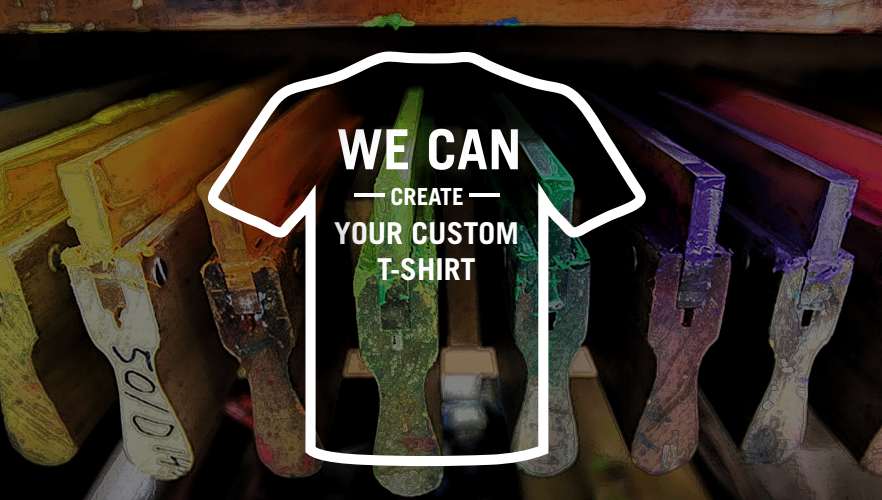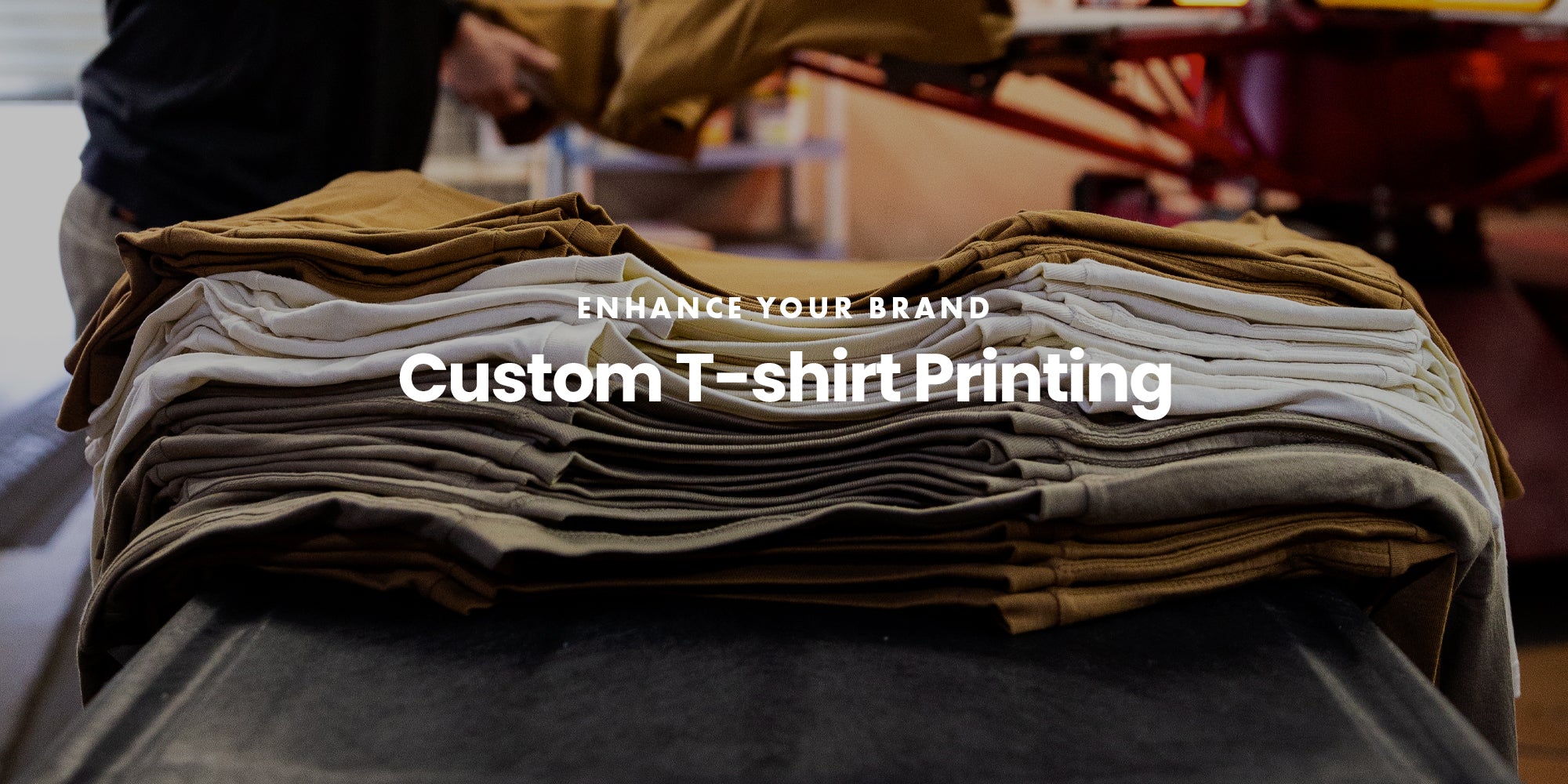Budget-Friendly T-Shirt Printing for Startups
Budget-Friendly T-Shirt Printing for Startups
Blog Article
Display Printing Uncovered: Whatever You Need to Know Concerning Tee Shirt and Garment Printing Methods
Screen printing is a remarkable technique that integrates art with strategy, providing unlimited possibilities for creativity. Prepared to discover the essential components that make screen printing an art type?
The Fundamentals of Display Printing: How It Works
When you dive into display printing, you'll uncover it's both an art and a scientific research. At its core, display printing involves creating a stencil, or screen, that allows ink to pass via only in particular locations.
Following, you'll mix your inks and prepare your printing surface area. Position the screen over the material, after that make use of a squeegee to press ink with the display onto the garment. This process calls for precision, as you want clear, lively prints. After printing, you'll treat the ink with warm, ensuring it complies with the material and lasts with washes. Each action is essential, and understanding them will boost your screen printing abilities, transforming simple garments into unique, expressive items.
Types of Screen Printing Methods
Once you understand the fundamentals of screen printing, it's time to explore the different techniques that can elevate your designs. One popular approach is conventional display printing, where ink is pressed with a stenciled display.
If you're going for fine details, consider discharge printing. This strategy gets rid of color from the material, leaving a soft, classic appearance. One more option is plastisol printing, understood for its toughness and vivid colors, making it a preferred for many brand names. Lastly, experiment with halftone printing to develop slope results and intricate styles. Each strategy has its one-of-a-kind beauty, so don't think twice to try them out to discover what suits your style best!
Crucial Devices for Display Printing
To achieve sensational lead to screen printing, having the right equipment is essential. You'll need a strong display printing frame, which holds the mesh that moves your layout onto the garment. Next, buy premium mops; these are crucial for using ink equally across the display. You'll likewise need a great exposure device to develop your displays, as well as a washout booth for cleaning them after usage. A trustworthy heat resource, like a conveyor clothes dryer or warm press, is important for healing your prints to assure durability. Don't fail to remember a proper office, geared up with tables and storage space for your supplies. Finally, safety equipment, such as masks and handwear covers, will certainly maintain you risk-free from chemicals and inks. With the right devices, you'll be well on your way to producing professional-quality prints.
Picking the Right Inks and Products
When picking inks and products for screen printing, you require to take into consideration the kind of ink that works ideal for your task. Assume regarding fabric compatibility to ensure your styles look last and fantastic lengthy. Also, check out green ink alternatives to make your printing process more sustainable.
Sorts Of Screen Inks
Picking the ideal display ink is necessary for achieving vivid, sturdy prints that meet your project's requirements. There are several types of display inks to check out. Plastisol ink is popular for its adaptability and ease of usage, providing exceptional shade opacity on dark materials. Water-based ink, on the other hand, supplies a softer feel and is environmentally friendly, making it perfect for those aiming to decrease their ecological influence. Release inks remove dye from the material, causing a soft, classic look however call for details handling. Specialty inks, such as glow-in-the-dark or metal, can add unique results to your layouts. Review your job needs and choose the ink that straightens finest with your preferred end result.

Material Compatibility Considerations
Understanding fabric compatibility is vital for accomplishing premium display prints, especially because different products respond distinctively to different inks. When choosing inks, consider the fabric type-- cotton, polyester, or blends. For cotton, water-based inks work well, offering soft qualities and breathability. Polyester, on the various other hand, often needs plastisol inks for better attachment and vibrant colors. If you're publishing on blends, you might need to utilize a combination of both kinds. Constantly evaluate your inks on example material to guarantee they stick appropriately and keep color stability. Additionally, remember that fabric weight and appearance can influence the final result, so choosing the best ink and product combination is crucial for your task's success.
Eco-Friendly Ink Options
Eco-friendly inks are coming to be a prominent choice for screen printers that desire to minimize their environmental influence while maintaining quality. When picking inks, take into consideration water-based inks, which are much less damaging and easier to cleanse up compared to standard solvents.
Furthermore, try to find inks made from renewable energies, such as soy or vegetable-based options. By choosing the best inks and products, you'll not just create stunning layouts however additionally contribute to a more sustainable printing procedure. Make the switch, and your prints will mirror your commitment to the atmosphere!
Preparing Your Layout for Screen Printing

Submit Style Demands
To assure your design looks sharp and vibrant on textile, you'll need to pay close focus to submit style requirements for screen printing. Start with vector data like AI or EPS, as they can be scaled without losing top quality. If you use raster images, go with high-resolution files, such as TIFF or PNG, ideally at 300 DPI. Avoid making use of JPEGs, as they can shed clarity when resized. Also, ensure your design has a clear background to prevent unwanted white sides on your prints. Keep color modes in mind; CMYK is typical for screen printing, so transform your RGB designs as necessary - screen printing kit. By adhering to these standards, you'll establish your art work up for an effective print.
Shade Splitting Up Techniques
Shade splitting up is an essential action in preparing your design for screen printing, and grasping it can greatly boost your print quality. You'll require to break your layout into specific colors, as each shade requires a different screen throughout printing. This precision not just assures exact color depiction but likewise streamlines the printing procedure.
Resolution and Size
Accomplishing the most effective lead to display printing begins with guaranteeing your design has the best resolution and size. Preferably, your art work needs to be at the very least 300 DPI (dots per inch) for sharp, clear prints. Your last product might look unprofessional and pixelated. if you make use of reduced resolution.
When it comes to dimension, think about the measurements of your print location. Style your artwork to match the final print size, ideally moved here creating it in the real measurements you'll be printing. This method, you'll prevent any kind of unexpected scaling concerns.
Constantly check your design in both vector and raster layouts. Vector graphics can be scaled without shedding top quality, making them ideal for display printing. Preparing appropriately will assure your layout looks fantastic on every garment!
Step-by-Step Screen Printing Refine
Screen printing is a vibrant procedure that permits you to produce lively styles on different surface areas. To get going, you'll need a display, emulsion, and your picked ink. First, prepare your screen by cleansing it thoroughly. Next off, use the emulsion uniformly and let it dry in a dark area. Once dry, subject your display to light with your layout positioned on it, which will certainly harden the emulsion where the light hits, developing a pattern - screen printing kit.
Put ink onto the screen and make use of a squeegee to push the ink via the stencil onto the material. Raise the screen very carefully and let the print dry. You have actually efficiently screen printed your style.
Tips for Successful Display Printing Projects
While you're diving right into your screen printing projects, bear in mind that preparation is vital to success. Start by gathering all your products-- inks, mops, garments, and displays. A clean office assists prevent undesirable errors, so clean up before you start.
Following, confirm your art work is high-resolution and properly sized for your garment. Test your display for correct exposure and clean it extensively to prevent smudges. When blending your inks, follow the producer's standards to attain the ideal consistency.
Throughout printing, use also pressure with your squeegee for regular outcomes. Do not rush; take your time to verify each print meets your criteria. After printing, let your garments completely dry entirely prior to handling or packaging them.
Finally, constantly keep a sample of your help future recommendation. By doing this, you can examine your progression and improve your strategies in time. Satisfied printing!

Frequently Asked Questions
Exactly how Long Does It Take to Set up a Display Printing Work?
Establishing a screen printing task normally takes around half an hour to an hour. You'll prepare the displays, mix inks, and readjust the press. The moment differs based on complexity her response and experience, so stay organized!
Can I Print on Different Textile Keys In Using the Exact Same Strategy?
Yes, you can publish on various fabric kinds making use of the very same strategy, yet you'll require to change your inks and setups. Some materials soak up ink in a different way, so trying out warranties the very best results for each and every material.
What Prevail Errors to Prevent in Display Printing?
When display printing, prevent usual mistakes like making use of the wrong ink, disregarding appropriate direct exposure times, or avoiding pre-press checks. Constantly examine your configuration and preserve tidy displays to assure high quality results each time.
Just How Can I Appropriately Clean and Preserve My Screen Printing Equipment?
To properly clean and preserve your display printing equipment, you should frequently clean screens with appropriate solvents, examine mops for wear, and ensure all devices are stored dry and dust-free. Uniformity improves and prevents pricey repair services efficiency.
Is Screen Printing Eco Pleasant Contrasted to Various Other Methods?
Screen printing can be more eco-friendly than other approaches, particularly if you make use of water-based inks and eco-conscious products. By picking sustainable materials and practices, you minimize waste and reduce your influence on the world.
Screen Printing Uncovered: Every Little Thing You Need to Know Concerning T-Shirt and Garment Printing Techniques
At its core, display printing includes creating a stencil, or display, that permits ink to pass with only in certain locations. Setting the display over the fabric, after that use a squeegee to push ink with the screen onto the garment. One prominent method is conventional display printing, where ink is pushed via a stenciled screen.When choosing inks and materials for screen printing, you require to take into account the type of webpage ink that functions best for your job.
Report this page